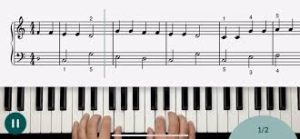Difference Between Arranging and Transcribing Music
Music arrangement and transcription are two distinct processes in the realm of music production, each serving unique purposes and requiring different skill sets. While both involve manipulating musical elements, they involve distinct approaches, objectives, and outcomes.
Arranging music involves taking an existing piece of music and reimagining it through various means such as instrumentation, harmony, rhythm, and structure. The arranger may add new sections, modify existing ones, change the tempo, or alter the dynamics to create a fresh interpretation of the original composition. Arranging is a creative endeavor that often involves adapting music to suit different performance settings, ensembles, or stylistic preferences.

Arrangers have the flexibility to inject their own artistic flair into the music, shaping its emotional impact and overall aesthetic. They may experiment with different instrumental combinations, explore unconventional harmonies, or introduce unexpected rhythmic elements to breathe new life into familiar melodies. Arranging requires a deep understanding of musical theory, orchestration techniques, and stylistic conventions, as well as a keen ear for balance, texture, and timbre.
https://tartalover.net/nicole-pesce
The Difference Between Arranging and Transcribing Music
One of the key distinctions between arranging and transcribing music lies in the level of creative freedom afforded to the arranger. While transcribing involves capturing an existing piece of music in a different form, arranging allows for greater artistic license and interpretation. Arrangers have the freedom to reinterpret music according to their own artistic vision, incorporating personal touches and stylistic nuances to create a unique rendition of the original composition.
Transcribing music, on the other hand, involves the process of notating music that was previously recorded or performed orally. Transcribers listen to recordings or live performances and meticulously document the musical elements such as melody, harmony, rhythm, and structure in written form. Transcribing is a meticulous process that requires a keen ear, acute attention to detail, and proficiency in music notation.
https://m.youtube.com/@tartalover2682/videos
Transcribers strive to capture the essence of the original performance faithfully, preserving its nuances, dynamics, and expressive qualities in written form. They may transcribe music for various purposes such as educational study, analysis, or archival preservation, ensuring that the music can be accurately reproduced and understood by others.
Unlike arranging, which involves reimagining music in a new context, transcribing music aims to faithfully replicate the original performance as closely as possible. Transcribers must be adept at deciphering complex musical passages, identifying individual voices or instruments, and accurately notating rhythmically and harmonically intricate passages.
While arranging and transcribing music serve distinct purposes, they are often complementary processes that intersect and overlap in various contexts. Arrangers may draw upon transcriptions as source material for their arrangements, using them as a foundation for exploration and experimentation. Similarly, transcribers may benefit from arrangements as reference points for understanding different interpretations of the same piece of music.
In conclusion, arranging and transcribing music are essential components of the music production process, each offering unique opportunities for creative expression, interpretation, and exploration. While arranging involves reimagining existing music through artistic interpretation, transcribing focuses on faithfully documenting and preserving musical performances in written form. Together, these processes enrich our understanding of music, fostering innovation, creativity, and appreciation for the rich tapestry of musical expression.



